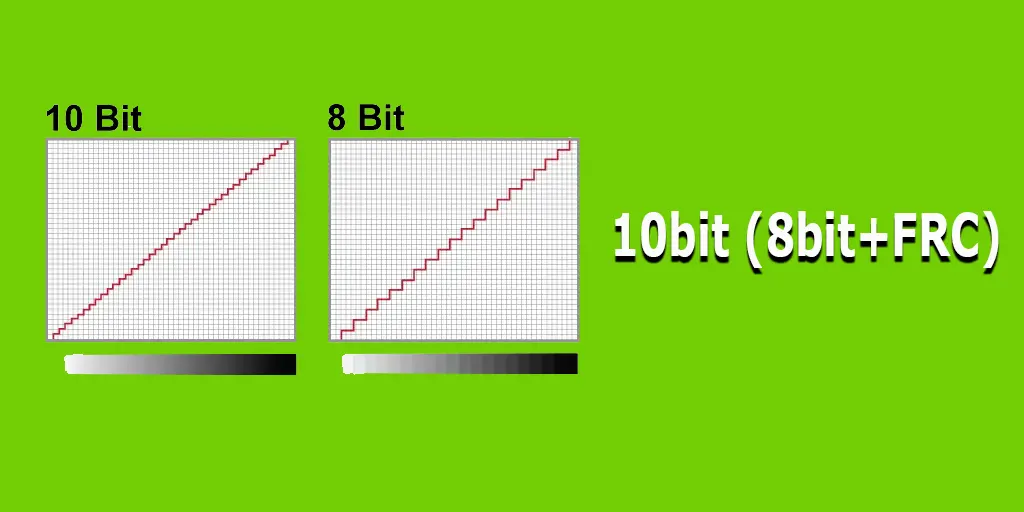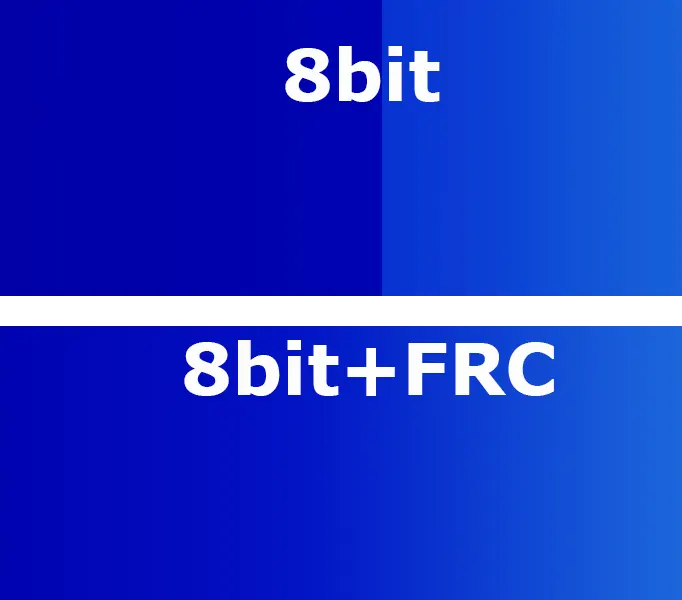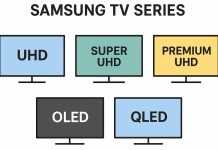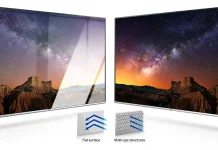Modern monitors and TVs come with a wide range of display options, from budget-friendly to high-end models. A notable segment within these displays includes those that support artificial color enhancement technology, leveraging human perception to improve image quality. These devices utilize technologies known as FRC (Frame Rate Control) or dithering. While both terms are often used interchangeably, they represent slightly different approaches with the same goal.
Frame Rate Control (FRC) is a technology that artificially adds color tones to an image. It does this by intentionally altering the color of a pixel to create smoother transitions between shades.
Dithering, on the other hand, introduces noise to the image, smoothing out the original color hue to achieve similarly soft transitions between colors.
Color tones transmitted by screens with different bitrates
Understanding the number of shades and bit depth can be illustrated using an 8-bit matrix as an example. In video, the original image is transmitted in three primary colors: blue, red, and green. Each pixel on the screen consists of three subpixels, one for each color.
A digital signal in its raw format can be represented by 2 bits (on or off), with varying numbers of blocks. In an 8-bit display, one subpixel can represent 2^8 colors, which equals 256 shades. Given that three subpixels are used to create a single color, the total number of possible shades is calculated as:
256×256×256=16.7 million hues.
Here is a brief overview of monitors and TVs based on their bit depth and picture quality:
| Bit Depth | Colors | Usage | Current Relevance |
|---|---|---|---|
| 6-bit | 0.26 million | Cheapest monitors, primarily for office work, not suitable for graphics. | Leading manufacturers have not used this quality in their products for over a decade. |
| 8-bit | 16.7 million | Mid-range monitors, suitable for working with graphics but not professional-grade. | 90% of TVs and monitors use 8-bit screens. More than half of TVs are equipped with this class of displays, including budget segment LED TVs and entry-level QLED TVs. |
| 10-bit | 1.07 billion | High-quality monitors suitable for photo editing and other tasks requiring superior color transitions. | Installed in premium TVs. |
How FRC works in displays
The human eye has a certain inertia. Because of this, two frequently changing images merge into one. If you look at a figure that changes color from white to black at a high frequency, it will appear gray to us. This is exactly how FRC works. If two “adjacent” colors change on a pixel at a high frequency, the eye will see an intermediate color that is not actually in the matrix palette.
If your TV or monitor supports FRC, this technology works in hardware. In turn, there are different algorithms for creating intermediate image tones, which have different names 8bit+A-FRC, classic 8bit+FRC, 8bit+Hi-FRC.
In general, some frames display colors corresponding to the palette of a given bit-depth matrix, but substitute the true color. For example, in the image below, the transition from dark blue to cyan results in an obvious and noticeable color shift. The following illustration schematically shows how a group of consecutive pixels performs on a screen both without and with FRC, and how humans perceive color.

Frame 1: The transition is clearly visible because the colors are shown as they are: the first two pixels are darker and the next two are lighter. A human perceives a distinct color transition.
Frame 2: The FRC comes into play, rearranging the colors of the second and third pixels.
Frame 3: Visually, a person perceives this rearrangement of pixels as the appearance of an additional color that does not exist on an 8-bit screen.
Does an 8-bit + FRC Display Really Achieve 10-bit Quality?
Of course not. Regardless of the technology employed, an 8-bit + FRC display will never truly display a billion shades. While it can visually present more shades and improve image quality, it will still fall short compared to a true 10-bit screen.
In real-world conditions, the perception of image shades is highly individual. Some people may perceive 200,000 shades of green, others only 10,000, and some might even see a million. Accurately measuring the number of shades an FRC display shows is very challenging and requires specialized laboratories. Moreover, the insurmountable obstacle in correctly determining the number of shades is individual perception, which is the foundation of the entire FRC technology.







